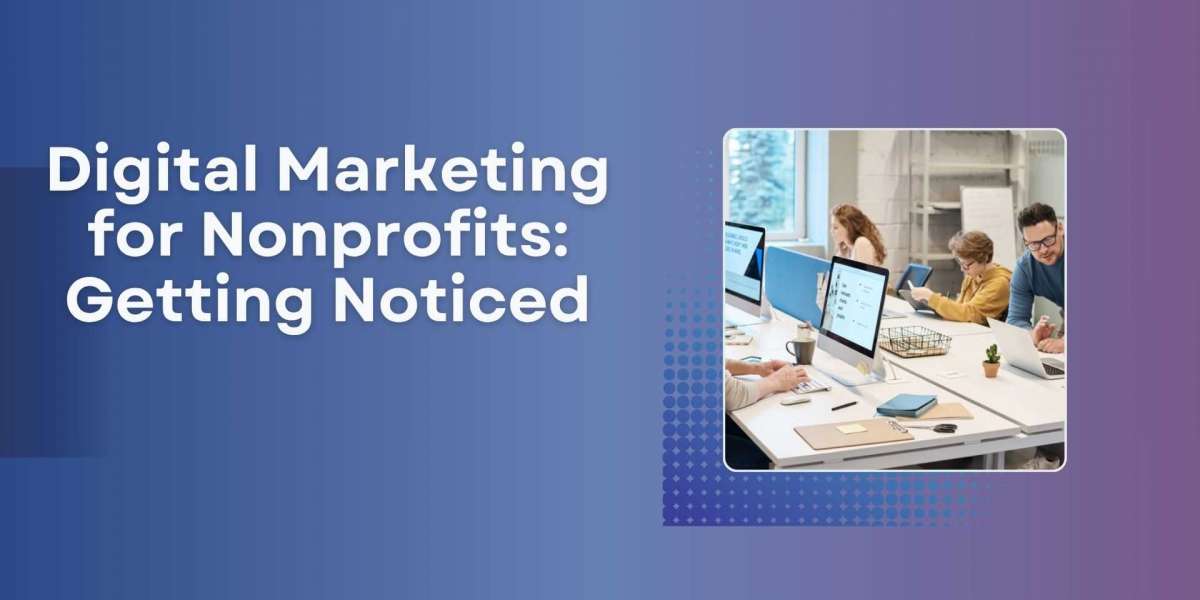In a digital age defined by rapid communication, social media, and data-driven decisions, nonprofits face both an incredible opportunity and a daunting challenge: how to get noticed. While passion and purpose are the lifeblood of any nonprofit organization, visibility is what drives support, engagement, and ultimately impact. This article explores how nonprofits can effectively harness digital marketing to build awareness, cultivate donors, and amplify their mission in a crowded online world.
The Importance of Digital Marketing for Nonprofits
Nonprofit organizations exist to serve communities, advocate for causes, and drive social change. However, with limited budgets and resources, many nonprofits struggle to compete with corporate marketing teams or well-funded campaigns. Digital marketing levels the playing field by offering cost-effective strategies for outreach and engagement.
Unlike traditional marketing, digital platforms offer real-time feedback, granular targeting, and the ability to build long-term relationships with supporters. Whether you're looking to increase donations, recruit volunteers, or promote an event, digital marketing provides measurable, scalable tools to meet your objectives.
Building a Strong Digital Foundation
Establish a Clear Brand Identity
Before launching a digital campaign, nonprofits must clarify their branding. This includes:
- A compelling mission statement
- A consistent visual identity (logo, color scheme, fonts)
- A distinctive voice and tone
Branding ensures that your audience instantly recognizes your organization and understands its values.
Optimize Your Website
Your website is your nonprofit’s digital headquarters. It must be:
- Mobile-responsive
- Easy to navigate
- Optimized for SEO (Search Engine Optimization)
- Secure and fast-loading
Most importantly, it should include clear calls-to-action (CTAs) such as "Donate Now," "Volunteer Today," or "Subscribe to Our Newsletter."
Create Engaging Content
Content is king in digital marketing. Share stories that showcase your impact. Use a mix of blog posts, videos, testimonials, infographics, and newsletters to educate and inspire. Visual storytelling is especially powerful for nonprofits, as it connects emotionally with audiences.
Leveraging Key Digital Marketing Channels
Email Marketing
Email remains one of the most effective tools for nonprofits. Build a segmented email list and send targeted messages based on supporter interests. Use email for:
- Donation drives
- Campaign updates
- Event invitations
- Volunteer opportunities
Social Media Marketing
Choose platforms where your target audience is most active—typically Facebook, Instagram, Twitter, and LinkedIn. Post regularly and engage with your followers by:
- Sharing behind-the-scenes content
- Featuring success stories
- Encouraging user-generated content (e.g., photos from volunteers)
Utilize features like Facebook and Instagram Stories, live videos, and polls to boost interaction.
Search Engine Optimization (SEO)
An effective SEO strategy increases the likelihood that people searching for causes similar to yours will find your website. Use:
- Relevant keywords in blog posts and landing pages
- Meta tags and descriptions
- Structured content with headers and bullet points
Google Ad Grants
Nonprofits can apply for up to $10,000/month in free advertising through Google Ad Grants. This allows you to appear at the top of Google search results and drive traffic to your site.
Pay-Per-Click (PPC) Advertising
While organic growth is essential, paid ads on platforms like Facebook and Google can give your content a significant boost. Use A/B testing to identify what resonates with your audience and adjust accordingly.
Building Community and Engagement
Tell Your Story
People don't donate to organizations—they donate to stories. Humanize your mission by highlighting individuals impacted by your work. Story-driven content fosters empathy and drives action.
Encourage Participation
Host online events such as webinars, QA sessions, or virtual fundraisers. Provide clear ways for your audience to get involved, whether through donations, peer-to-peer fundraising, or advocacy campaigns.
Show Appreciation
Thank your donors and volunteers publicly via social media shout-outs or email spotlights. Personalization goes a long way in retaining support.
Measuring Success: Analytics and Reporting
Digital marketing thrives on data. Use tools like Google Analytics, Facebook Insights, and email open rates to evaluate campaign performance. Track:
- Website traffic sources
- Conversion rates
- Engagement metrics
- Donor retention
Use these insights to refine your strategies and focus on what works best.
Overcoming Common Challenges
Limited Budget
Digital marketing doesn’t have to be expensive. Focus on organic strategies, leverage free tools, and prioritize platforms that offer the most return.
Lack of Expertise
If your team lacks marketing skills, consider recruiting volunteers, interns, or part-time consultants. Free online courses and webinars can also help your team upskill.
Time Constraints
Use automation tools like Mailchimp, Hootsuite, or Buffer to schedule posts and emails. Develop a content calendar to plan ahead and stay consistent.
Real-World Examples
- Charity: Water uses visually rich content and storytelling to keep supporters informed and emotionally engaged. Their donation platform offers transparency by showing exactly where funds go.
- The Trevor Project effectively uses Twitter and Instagram to provide crisis resources and engage young audiences with timely, relevant content.
- World Wildlife Fund (WWF) offers downloadable content, online petitions, and user-generated content campaigns to keep their supporters involved and invested.
Conclusion: Start Where You Are
Digital marketing is no longer optional for nonprofits—it’s essential. But you don’t need to master everything overnight. Begin with a strong website, tell your story with heart, and focus on a few key channels. With authenticity, consistency, and the right strategy, your nonprofit can rise above the noise and get the attention it deserves.








